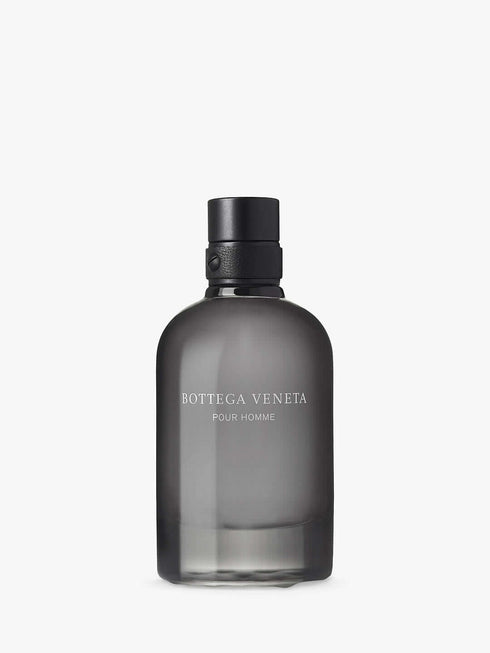- Home
- Bottega Veneta Pour Homme

This new scent by Bottega Veneta is inspired by a journey of a man leaving the region of Veneto and heading towards the north to the dolomites...spending his days in a mountain house and recharging himself before he heads back to the urban jungle.
Therefore the scent is infused with Andalusian labdanum as the key note. With top notes of zesty Calabrian bergamot, pine from Siberia and juniper from the Balkan. Heart notes of spicy Jamaican pepper with Canadian fir resins, clary sage, Indonesian patchouli and finishing off with a leather dry down.
- Bottega Veneta Pour Homme eau de parfum
- Notes: Calabrian bergamot, pine from Siberia, juniper from the Balkan. Heart notes of spicy Jamaican pepper, Canadian fir resins, clary sage, Indonesian patchouli and leather
- Original packaging is not included and is for reference only.
- 150 gram (weight)
The lists of ingredients that make up the composition of parfums products are regularly updated. Commonly used ingredients are:
Alcohol ● Parfum (Fragrance) ● Aqua (Water) ● Alpha-isomethyl Ionone ● Benzyl Salicylate ● Limonene ● Linalool ● Ethylhexyl Methoxycinnamate ● Diethylamino Hydroxybenzoyl Hexyl Benzoate ● Citronellol ● Geraniol ● BHT ● Oil Extracts ● Citral ● Benzyl Alcohol ● Benzyl Benzoate ● Eugenol ● Coloring Agents ● Tocopherol ● DPG
The manufacturer is responsible for the ingredients of the product. We recommend checking the list of product ingredients directly on the manufacturer's website due to potential changes. Periodic updates to EU regulations could demand the for manufacturers to re-formulate existing fragrances to meet new regulations.
Be aware that large neck roller bottles may contain polymers to reduce leakage in according to regulatory packaging requirements. Roller bottles should not be transferred into spray bottles.
Allergies or Sensitivities:
If you suffer allergies or sensitivies, and before using a perfume product or the long-term use of fragrances, please check the latest updated list of ingredients from the original manufacturer to be certain that the ingredients are suitable for your personal use as they may differ, be updated or changed with new released batches.
Perfumes can also be used on clothes instead of skin to reduce direct skin contact. However, due to alcohol content or thickening agents, perfumes can have a small negative effect on fabrics:
The (EU) Cosmetics Regulation 1223/2009 lists the 26 most-known allergenic substances, which you can find in the link below:
- MCMillie C.Verified Buyer1 year agoRated 5 out of 5 stars4 Stars
Great company, good service with good product selection. Will order again.
Was this helpful? - @@lucas_fanVerified Buyer1 year agoRated 5 out of 5 stars4 Stars
A lovely scent that gets better throughout the day. Perfect for evening wear.
Was this helpful? - TOThomas O.Verified Buyer2 years agoRated 5 out of 5 stars5 Stars
Was this helpful? - OOliverVerified Buyer2 years agoRated 4 out of 5 stars4 Stars
I gave this as a gift, and the recipient was absolutely thrilled.
Was this helpful?

